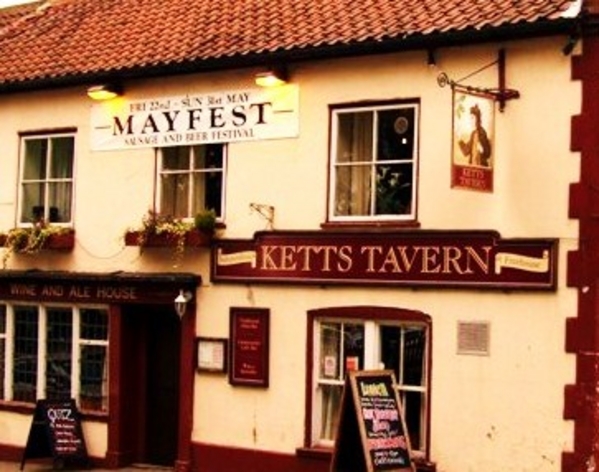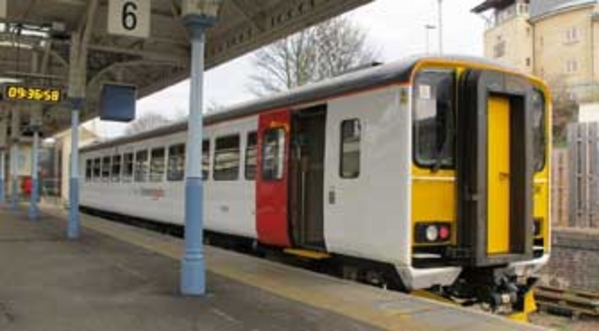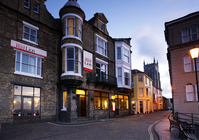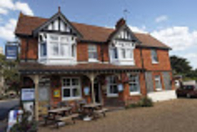From the City of Ale, to the North Norfolk coast and the steam Poppy Line
Added: Saturday, August 10th 2013

On 11 March 2010 British Railways standard class 7 70013 Oliver Cromwell rode victoriously over Station Road in Sheringham, thanks to the newly installed level crossing connecting the Network Rail station with the North Norfolk Railway. The steam locomotive was carrying a train from London’s Kings Cross, allowing for the first through train in 46 years since Dr Beeching closed the line between Peteborough and Yarmouth. Part of it survives as the preserved railway running from the small Norfolk seaside town to Holt.

Sheringham is connected to Norwich by the community-run Bittern Line, a Network Rail route running modern diesel services but of equal delight to travel on. The Norfolk country side, with its flat terrain and large skies, is a wonderful place to visit for train and beer enthusiasts alike.
We start our journey on the railways of Norfolk in Norwich, one of the best cities in the country for good beer. The railway reached the city in 1844 with the first connection to London made available the following year. First erected in 1886 and with an impressive domed roof, the Victorian station building looks over the river Wensum that greets travellers. The station is the terminus for the Great Eastern Main Line running from London Liverpool Street, with branch services to Sheringham, Great Yarmouth, Lowestoft and Cambridge, as well as the cross country route to Liverpool.
When you leave the station, cross Thorpe Road to Riverside Road and follow the river for the short walk to Ketts Tavern, a colourful cream and red pub with interior wood beams (29 Ketts Hill; 01603 449654; www.norwichbear.co.uk) It’s owned by the Norwich Bear Brewery and run by Dawn Hopkins, one of the leading voices in the Save Our Pubs national campaign. Ketts serves Norwich Bear Classic, Legend, Pooh Bear and NPA. The pub is at the foot of one of the only gradients in the city that leads to Mousehold Heath, a designated nature reserve with woodland and heathland and stunning views over the city, including the two cathedrals and castle that dominate the flat Norfolk skyline. The heath was the scene of Ketts Rebellion in 1549, when an army of poor agricultural labourers protested against land enclosures.
Cross the bridge that spans the Wensum and walk into the city centre to the Murderers, a family- owned building that has existed as a pub since 1696 (2-8 Timber Hill; 01603 621447; www.themurderers.co.uk). The pub is close to the castle, in a narrow, cobbled lane, typical of the many passages and alleys that thread at irregular angles through the ancient city. The pub’s official name, and the one that’s written above the door, is the Gardener’s Arms. The Murderers is a nickname that stems from the killing of the landlady’s daughter by her husband in 1895. The pub has an enormous range of beer, including a house beer, Murderers Ale, Golden, Cherry Diva, , Doom Bar, Fuller’s London Pride,and Woodforde’s Wherry and Nelson’s Revenge. Landlord Phil cutter organises regular beer festivals that focus on beers from East Anglia.
Famous throughout Norwich are the trio of Fat Cat pubs and its brewery, all owned by local Colin Keatley. The closest to the station is the new Fat Cat & Canary,101 Thorpe Road; 01603 436925; www.fatcatcanary.co.uk). It’s named after Norwich City football club, which gets the nickname the Canaries from the 15th and 16th century when Flemish weavers who settled in Norwich brought the birds with them. The pub is a fans’ favourite and is just a few minutes’ walk from the stadium, in Carrow Road. The pub has black and white tiled floors and beer memorabilia on every stretch of wall. It serves its own Fat Cat Bitter, Honey, Wild Cat, Marmalade and Mocha Cat as well as Adnams Southwold Bitter.
Other recommended Norwich pubs include: Duke of Wellington, 91 Waterloo Road; Fat Cat, 49 West End Street; Fat Cat Brewery Tap, 98 Lawson Road; King’s Arms, 22 Hall Road; King’s Head, 42 Magdalen Street; Trafford Arms, 61 Grove Road; Vine, 7 Dove Street, which has a Thai restaurant. And don’t miss City of Ale, the annual celebration of the city’s pubs and Norfolk breweries. It runs from late May to early June: www.cityofale.org.uk.

Back at the station, jump aboard a train (above) bound for Sheringham via the Bittern Line, named after a rare bird that resides in the reedy wetlands of Norfolk that the branch line traverses. The line, built by the East Norfolk Railway company, first served passengers fromf Norwich in 1874 and is now operated by Greater Anglia, running one or two carriage diesel trains. One of the first stops on the line is Hoverton and Wroxham. Here you can hire a boat and journey down the broads or take the Bure Valley Railway, Britain’s longest non-standard gauge line. The line is miniature, running on narrow gauge track but operates scaled down versions of standard gauge locomotives, making for an unusual but pleasant ride. The nine-mile track is contained entirely within the Broads National Park.
The Bittern Line continues on through the North Norfolk countryside until it reaches the coastal town of Cromer, a favourite of holiday makers since the 19th century. It retains the charm of an old seaside town with its Victorian pier and plentiful shops on the promenade selling buckets and spades, post cards and ice creams. A brief walk up the cliffs takes you to the Red Lion, perhaps the finest pub in town (Brook Street; 01263 514964; www.redlion-cromer.co.uk). The hotel is an impressive Victorian structure, with upper storey rooms peering out of the roof like castle turrets, with fine views of the North Sea and Cromer’s pier. There are two bars, one Edwardian and one with mahogany panels, serving Adnams Southwold Bitter and Woodforde’s Wherry with a number of guest beers from local microbreweries making regular appearances. There are regular beer festivals and accommodation is available.

While the train reaches the buffers at Cromer, this is not the end of the line as the train reverses towards Sheringham, which forms the terminus. The town became economically important when the Midland and Great Northern Joint Railway was built along the coast in the late 19th century and could send locally caught crab and lobster down to London markets. Both stations in Sheringham are within minutes of the sea and on the seafront we are greeted by the Crown, whose first incarnation was destroyed by a fierce storm, with its second built just inches from the water in the 1930s (East Cliff; 01263 823213; www.crown-sheringham.co.uk). It retains a traditional interior with three wood panelled lounges and a central bar serving food as well as Fuller’s London Pride, Greene King IPA and Abbot, Morland Old Speckled Hen and Woodforde’s Wherry.

The country station at Weybourne makes for a delightful halfway point on the line, as well as housing the locomotive and carriage restoration centre. A short walk down a hedge-lined country lane brings you into the village and the Ship, a charming pub with three sea-themed dining areas and a bar serving between six and 10 ales, mostly from local breweries such as Grain, Humpty Dumpty and Winter’s (The Street; 01263 588721; www.shipinnweybourne.co.uk).
The train line runs locomotives that would have been built and run by different companies in various parts of the country, including the Great Western Railway, the London Midland and Scottish Railway, as well as engines built by the nationalised post-war British Railways. (The loco pictured is Great western 56XX.) In the era of the “Big Four” private companies, the line was owned by the London and North Eastern Railway and the flagship locomotive of the line is appropriately LNER B12 4-6-0 – 8572. In its current LNER apple green livery, if seen carrying a train of LNER teak coaches, you couldn’t be blamed for thinking it might be the Flying Scotsman, if not the famous engine’s younger brother.

The line ends at Holt, a country station a bus ride away from the picturesque Georgian market town. In the town centre, the Kings Head is a Grade II-listed building with up to 14 ales on offer, including Woodforde’s Wherry, Adnams Southwold Bitter and Broadside as well as an ever changing selection of guest beers. Accommodation is available and chef Adam Chapman offers acclaimed local dishes, with several vegetarian options. It’s good place to stay, enjoy some good beer and a meal before making the return journey to Norwich.
For more information about the railways mentioned visit http://www.nnrailway.co.uk/ and http://www.bitternline.com/





